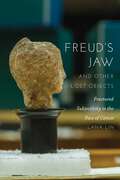Résultats de recherche de titre
Articles 1495821 à 1495840 sur 1497201
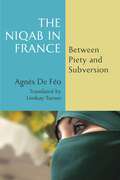
The Niqab in France: Between Piety and Subversion
Par Agnès De Féo. 2024
This original new work is the fascinating result of sociologist and documentary filmmaker Agnès De Féo’s ten-year exploration of the…
phenomenon of niqab wearing. It is at once a groundbreaking study and a series of compelling first-person accounts from French and Francophone women who wear or have worn the niqab in France’s Salafi communities. With the backdrop of the French government’s 2010 ban on full facial veiling in public spaces, which itself has shaped the phenomenon, De Féo draws on her subjects’ own words to show their agency, working against the clichés that often underlie public views of the niqab—that it is purely the result of masculine pressure, for example, or extreme religiosity or nationalism, or the submissive desire to disappear. Instead, she shows, the niqab is multivalent: women wear it for reasons that range from religious piety to the desire to rebel against mainstream society, family, or the rule of law. The reasons are complex, overdetermined, contradictory, or even inconsistent, but they are the women’s own. Despite being worn only by a small minority of Muslim women, the Islamic garment has nonetheless been a major source of intense political, religious, and cultural debate in France. Searching to understand, rather than speculate, De Féo chose to approach the people who wear the niqab, and to make them, rather the veil itself, the subject of her research. Her unprecedented study, based on more than 200 interviews, reveals the many factors—social, political, geopolitical, and psychological—underpinning a personal choice that is not always as religious as it seems.The book ends with sixteen captivating interviews giving voice to stories rarely heard. With finesse and discernment, the author debunks the myths surrounding the wearing of the niqab, and sheds light on a practice subject to misunderstanding and prejudice, offering the reader unique insight. Challenging our preconceived notions and stereotypes about women who wear any form of Islamic apparel, but particularly the niqab, The Niqab in France introduces a group of women each with her own life story, her own share of personal struggles, aspirations, and desires, and her own claim to a certain place in society.This work received support for excellence in publication and translation from Albertine Translation, a program created by Villa Albertine.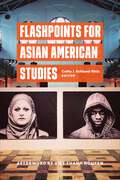
Flashpoints for Asian American Studies
Par Cathy J. Schlund–Vials, Editor. 2018
Emerging from mid-century social movements, Civil Rights Era formations, and anti-war protests, Asian American studies is now an established field…
of transnational inquiry, diasporic engagement, and rights activism. These histories and origin points analogously serve as initial moorings for Flashpoints for Asian American Studies, a collection that considers–almost fifty years after its student protest founding--the possibilities of and limitations inherent in Asian American studies as historically entrenched, politically embedded, and institutionally situated interdiscipline. Unequivocally, Flashpoints for Asian American Studies investigates the multivalent ways in which the field has at times and—more provocatively, has not—responded to various contemporary crises, particularly as they are manifest in prevailing racist, sexist, homophobic, and exclusionary politics at home, ever-expanding imperial and militarized practices abroad, and neoliberal practices in higher education.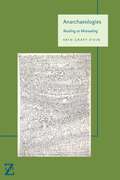
Anarchaeologies: Reading as Misreading (Lit Z)
Par Erin Graff Zivin. 2020
How do we read after the so-called death of literature? If we are to attend to the proclamations that the…
representational apparatuses of literature and politics are dead, what aesthetic, ethical, and political possibilities remain for us today? Our critical moment, Graff Zivin argues, demands anarchaeological reading: reading for the blind spots, errors, points of opacity or untranslatability in works of philosophy and art.Rather than applying concepts from philosophy in order to understand or elucidate cultural works, the book exposes works of philosophy, literary theory, narrative, poetry, film, and performance art and activism to one another. Working specifically with art, film, and literature from Argentina (Jorge Luis Borges, Juán José Saer, Ricardo Piglia, César Aira, Albertina Carri, the Internacional Errorista), Graff Zivin allows such thinkers as Levinas, Derrida, Badiou, and Rancière to be inflected by Latin American cultural production. Through these acts of interdiscursive and interdisciplinary (or indisciplinary) exposure, such ethical and political concepts as identification and recognition, decision and event, sovereignty and will, are read as constitutively impossible, erroneous. Rather than weakening either ethics or politics, however, the anarchaeological reading these works stage and demand opens up and radicalizes the possibility of justice.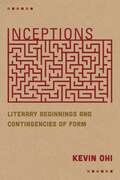
Inceptions: Literary Beginnings and Contingencies of Form
Par Kevin Ohi. 2021
The beginning is both internal and external to the text it initiates, and that noncoincidence points to the text’s vexed…
relation with its outside. Hence the nontrivial self-reflexivity of any textual beginning, which must bear witness to the self-grounding quality of the literary work— its inability either to comprise its inception or to externalize it in an authorizing exteriority. In a different but related way, the fact that they must begin renders our lives and our desires opaque to us; what Freud called “latency” marks not only sexuality but human thought with a self-division shaped by asynchronicity.From Henry James’s New York Edition prefaces to George Eliot’s epigraphs, from Ovid’s play with meter to Charles Dickens’s thematizing of the ex nihilo emergence of character, from Wallace Stevens’s abstract consideration of poetic origins to James Baldwin’s, Carson McCullers’s, and Eudora Welty’s descriptions of queer childhood, writers repeatedly confront the problem of inception. Inception introduces a fundamental contingency into texts and psyches alike: in the beginning, all could have been otherwise.For Kevin Ohi, the act of inception, and the potential it embodies, enables us to see making and unmaking coincide within the mechanism of creation. In this sense, Inceptions traces an ethics of reading, the possibility of perceiving, in the ostensibly finished forms of lives and texts, the potentiality inherent in their having started forth.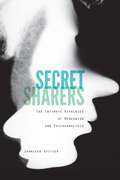
Secret Sharers: The Intimate Rivalries of Modernism and Psychoanalysis
Par Jennifer Spitzer. 2023
Secret Sharers traces a genealogy of secret sharing between literary modernism and psychoanalysis, focusing on the productive entanglements and intense…
competitive rivalries that helped shape Anglo-American modernism as a field. As Jennifer Spitzer reveals, such rivalries played out in explicit criticism, inventive misreadings, and revisions of Freudian forms—from D. H. Lawrence’s re-descriptions of the unconscious to Vladimir Nabokov’s parodies of the psychoanalytic case study. While some modernists engaged directly with Freud and Freudian psychoanalysis with unmistakable rivalry and critique, others wrestled in more complex ways with Freud’s legacy. The key protagonists of this study—D. H. Lawrence, Virginia Woolf, W. H. Auden, and Vladimir Nabokov—are noteworthy for the way they engaged with, popularized, and revised the terms of Freudian psychoanalysis, while also struggling with it as an encroaching discourse. Modernists read psychoanalysis, misread psychoanalysis, and sometimes refused to read it altogether, while expressing anxiety about being read by psychoanalysis—subjecting themselves and their art to psychoanalytic interpretations.As analysts, such as Freud, Ernest Jones, and Alfred Kuttner, turned to literature and art to illustrate psychoanalytic theories, modernists sought to counter such reductive narratives by envisioning competing formulations of the relationship between literature and psychic life. Modernists often expressed ambivalence about the probing, symptomatic style of psychoanalytic interpretation and responded with a re-doubling of arguments for aesthetic autonomy, formal self-consciousness, and amateurism. Secret Sharers reveals how modernists transformed the hermeneutic and diagnostic priorities of psychoanalysis into novel aesthetic strategies and distinctive modes of epistemological and critical engagement. In reassessing the historical and intellectual legacies of modernism, this book suggests that modernist responses to psychoanalytic criticism anticipate more recent critical debates about the value of “symptomatic” reading and the “hermeneutics of suspicion.”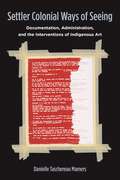
Settler Colonial Ways of Seeing: Documentation, Administration, and the Interventions of Indigenous Art
Par Danielle Taschereau Mamers. 2024
An innovative analysis of Indigenous strategies for overcoming the settler state.How do bureaucratic documents create and reproduce a state’s capacity…
to see? What kinds of worlds do documents help create? Further, how might such documentary practices and settler colonial ways of seeing be refused?Settler Colonial Ways of Seeing investigates how the Canadian state has used documents, lists, and databases to generate, make visible—and invisible—Indigenous identity. With an archive of legislative documents, registration forms, identity cards, and reports, Danielle Taschereau Mamers traces the political and media history of Indian status in Canada, demonstrating how paperwork has been used by the state to materialize identity categories in the service of colonial governance. Her analysis of bureaucratic artifacts is led by the interventions of Indigenous artists, including Robert Houle, Nadia Myre, Cheryl L’Hirondelle, and Rebecca Belmore. Bringing together media theories of documentation and the strategies of these artists, Settler Colonial Ways of Seeing develops a method for identifying how bureaucratic documents mediate power relations as well as how those relations may be disobeyed and re-imagined.By integrating art-led inquiry with media theory and settler colonial studies approaches, Taschereau Mamers offers a political and media history of the documents that have reproduced Indian status. More importantly, she provides us with an innovative guide for using art as a method of theorizing decolonial political relations. This is a crucial book for any reader interested in the intersection of state archives, settler colonial studies, and visual culture in the context of Canada’s complex and violent relationship with Indigenous peoples.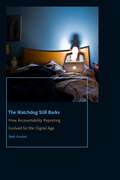
Perhaps no other function of a free press is as important as the watchdog role—its ability to monitor the work…
of the government. It is easier for politicians to get away with abusing power—wasting public funds and making poor decisions—if the press is not shining its light with what is termed “accountability reporting.” This need has become especially clear in recent months, as the American press has come under virulent direct attack for carrying out its watchdog duties. Upending the traditional media narrative that watchdog accountability journalism is in a long, dismaying decline, The Watchdog Still Barks presents a study of how this most important form of journalism came of age in the digital era at American newspapers.Although the American newspaper industry contracted significantly during the 1990s and 2000s, Fordham professor and former CBS News producer Beth Knobel illustrates through empirical data how the amount of deep watchdog reporting on the newspapers’ studied front pages generally increased over time despite shrinking circulations, low advertising revenue, and pressure to produce the kind of soft news that plays well on social media. Based on the first content analysis to focus specifically on accountability journalism nationally, The Watchdog Still Barks examines the front pages of nine newspapers located across the United States to paint a broad portrait of how public service journalism has changed since 1991 as the advent of the Internet transformed journalism. This portrait of the modern newspaper industry shows how papers of varying sizes and ownership structures around the country marshaled resources for accountability reporting despite significant financial and technological challenges.The Watchdog Still Barks includes original interviews with editors who explain why they are staking their papers’ futures on the one thing that American newspapers still do better than any other segment of the media: watchdog and investigative reporting.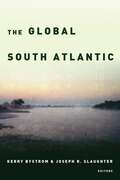
The Global South Atlantic
Par Kerry Bystrom and Joseph R. Slaughter. 2018
Not only were more African slaves transported to South America than to North, but overlapping imperialisms and shared resistance to…
them have linked Africa, Latin America, and the Caribbean for over five centuries. Yet despite the rise in transatlantic, oceanic, hemispheric, and regional studies, and even the growing interest in South-South connections, the South Atlantic has not yet emerged as a site that captures the attention it deserves.The Global South Atlantic traces literary exchanges and interlaced networks of communication and investment—financial, political, socio-cultural, libidinal—across and around the southern ocean. Bringing together scholars working in a range of languages, from Spanish to Arabic, the book shows the range of ways people, governments, political movements, social imaginaries, cultural artefacts, goods, and markets cross the South Atlantic, or sometimes fail to cross.As a region made up of multiple intersecting regions, and as a vision made up of complementary and competing visions, the South Atlantic can only be understood comparatively. Exploring the Atlantic as an effect of structures of power and knowledge that issue from the Global South as much as from Europe and North America, The Global South Atlantic helps to rebalance global literary studies by making visible a multi-textured South Atlantic system that is neither singular nor stable.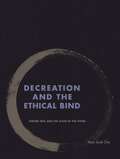
Decreation and the Ethical Bind: Simone Weil and the Claim of the Other
Par Yoon Sook Cha. 2017
In Simone Weil’s philosophical and literary work, obligation emerges at the conjuncture of competing claims: the other’s self-affirmation and one’s…
own dislocation; what one has and what one has to give; a demand that asks for too much and the extraordinary demand implied by asking nothing. The other’s claims upon the self—which induce unfinished obligation, unmet sleep, hunger—drive the tensions that sustain the scene of ethical relationality at the heart of this book.Decreation and the Ethical Bind is a study in decreative ethics in which self-dispossession conditions responsiveness to a demand to preserve the other from harm. In examining themes of obligation, vulnerability, and the force of weak speech that run from Levinas to Butler, the book situates Weil within a continental tradition of literary theory in which writing and speech articulate ethical appeal and the vexations of response. It elaborates a form of ethics that is not grounded in subjective agency and narrative coherence but one that is inscribed at the site of the self’s depersonalization.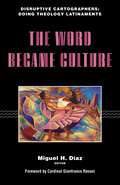
The Word Became Culture (Disruptive Cartographers: Doing Theology Latinamente)
Par Miguel H. Díaz. 2020
Exploring Latin@ theologies and the power of revelation.The Word Became Culture enacts a preferential option for culture, retrieving experiences and…
expressions from across latinidad as sources of theologizing and acts of resistance to marginalization. Each author in this edited volume demonstrates the many ways in which Latin@ theologies are disruptive, generative, and creative spaces rooted in the richness, struggles, texts, and rituals found at the intersections of faith and culture. With a foreword by Cardinal Gianfranco Ravasi, president emeritus of the Pontifical Council for Culture, this book situates Latin@ theologies in the ongoing search for and recognition of the “Word becoming” within the particularities of diverse cultural experiences.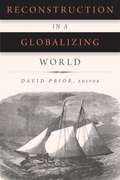
Reconstruction in a Globalizing World (Reconstructing America)
Par David Prior. 2018
As one of the most complexly divisive periods in American history, Reconstruction has been the subject of a rich scholarship.…
Historians have studied the period’s racial views, political maneuverings, divisions between labor and capital, debates about woman suffrage, and of course its struggle between freed slaves and their former masters. Yet, on each of these fronts scholarship has attended overwhelmingly to the eastern United States, especially the South, thereby neglecting important transnational linkages. This volume, the first of its kind, will examine Reconstruction’s global connections and contexts in ways that, while honoring the field’s accomplishments, move it beyond its southern focus.The volume will bring together prominent and emerging scholars to showcase the deepening interplay between scholarships on Reconstruction and on America’s place in world history. Through these essays, Reconstruction in a Globalizing World will engage two dynamic fields of study to the benefit of them both. By demonstrating that the South and the eastern United States were connected to other parts of the globe in complex and important ways, the volume will challenge scholars of Reconstruction to look outwards. Likewise, examining these same connections will compel transnationally-minded scholars to reconsider Reconstruction as a pivotal era in the shaping of the United States’ relations with the rest of the world.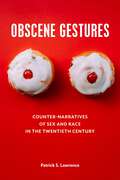
Obscene Gestures: Counter-Narratives of Sex and Race in the Twentieth Century
Par Patrick S. Lawrence. 2022
Drawing on sources as diverse as Supreme Court decisions, nightclub comedy, congressional records, and cultural theory, Obscene Gestures explores the…
many contradictory vectors of twentieth-century moralist controversies surrounding literary and artistic works from Henry Miller’s Tropic of Cancer to those of Toni Morrison, Alice Walker, Kathy Acker, Robert Mapplethorpe, 2 Live Crew, Tony Kushner, and others. Patrick S. Lawrence dives into notorious obscenity debates to reconsider the divergent afterlives of artworks that were challenged or banned over their taboo sexual content to reveal how these controversies affected their critical reception and commercial success in ways that were often determined at least in part by racial, gender, or sexual stereotypes and pernicious ethnographic reading practices.Starting with early postwar touchstone cases and continuing through the civil rights, feminist, and LGBTQ+ movements, Lawrence demonstrates on one level that breaking sexual taboos in literary and cultural works often comes with cultural cachet and increased sales. At the same time, these benefits are distributed unequally, leading to the persistence of exclusive hierarchies and inequalities.Obscene Gestures takes its bearings from recent studies of the role of obscenity in literary history and canon formation during the late nineteenth and early twentieth centuries, extending their insights into the postwar period when broad legal latitude for obscenity was established but when charges of obscenity still carried immense symbolic and political weight. Moreover, the rise of social justice movements around this time provides necessary context for understanding the application of legal precedents, changes in the publishing industry, and the diversification of the canon of American letters. Obscene Gestures, therefore, advances the study of obscenity to include recent developments in the understanding of race, gender, and sexuality while refining our understanding of late-twentieth-century American literature and political culture.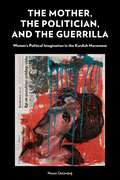
The Mother, the Politician, and the Guerrilla: Women’s Political Imagination in the Kurdish Movement
Par Nazan Üstündağ. 2023
The Mother, the Politician, and the Guerrilla intervenes in discussions on decolonialism and feminism by introducing the example of the…
Kurdish Women’s Freedom Movement. Üstündağ shows how the practices and the concepts of the movement contribute to debates on how the past, present, and future can be critically rethought in revolutionary ways.In the movement’s images, figures, voices, bodies, and their reverberations Üstündağ elaborates a new political imagination that has emerged in Kurdistan through women’s acts and speech. This political imagination unfolds between flesh, body, voice, language. It is the result of Kurdish women’s desire to find new ways of being and becoming, between the necessary and the possible.Focusing on the figures of the mother, the woman politician and woman guerilla, Üstündağ argues that the Kurdish Women’s Freedom Movement changes what politics consists of, including its matter, relationality, temporality, and spatiality. Although anchored in the specific Kurdish experiences, the book puts the movement into conversation with feminist political theory, psychoanalysis, Black Studies, Queer Studies, and Decolonial Studies. In solidarity with the Kurdish Movement’s tradition of resistance to History with a capital H that Kurds have built through reiterated performance, the book seeks to establish what new entanglements with wide-ranging thought the movement offers as a provocation for contemporary politics.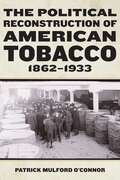
The Political Reconstruction of American Tobacco, 1862-1933 (Reconstructing America)
Par Patrick Mulford O’Connor. 2025
A deeply researched and clearly argued account of the mutual growth of the federal government and the modern tobacco Nearly…
everything about the United States tobacco economy changed in the generation following the American Civil War. From labor to consumption, manufacturing to regulation, tobacco was utterly reconstructed, “comparatively a new industry,” as one contemporary wrote.The Political Reconstruction of American Tobacco, 1862–1933 exposes the causes of these changes, and in the process, it reconsiders cornerstones of the American national narrative. Through a detailed rendering of tobacco’s late-nineteenth-century political economy, this book argues that the federal state’s and American capitalism’s development were mutually constitutive—and fundamentally political—processes. From the Civil War to the Progressive Era, diverse political movements across tobacco’s commodity chain drove state and market development, creating the immense power and stifling poverty that defined tobacco’s reconstruction. The Political Reconstruction of American Tobacco, 1862–1933 emphasizes the significance of the thousands of manufacturers whose interest groups shaped federal tax policy and, in turn, forged a powerful and effective internal revenue system; the increasingly influential fertilizer producers and warehouse operators who determined tobacco’s value; and the crop scientists who sought to promote and rationalize US tobacco production. As these actors reshaped tobacco’s commodity chain, they missed, and even dismissed, the interests of tobacco growers, especially newly emancipated African Americans and smallholding whites throughout the South.The ruling logic of tobacco’s reconstructed political economy rationalized agrarian indebtedness, justified low prices, and intensified labor discipline on thousands of small farms. In emphasizing these exclusions, The Political Reconstruction of American Tobacco, 1862–1933 reveals how nineteenth-century state and economic development coincided with and even created rural poverty.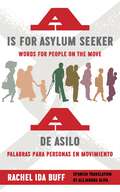
A is for Asylum Seeker: Words For People On The Move/palabras Para Personas En Movimiento
Par Rachel Ida Buff. 2020
A clear and concise A-to-Z of keywords that echo our current human rights crisisAs millions are forced to leave their…
nations of origin as a result of political, economic, and environmental peril, rising racism and xenophobia have led to increasingly harsh policies. A mass-mediated political circus obscures both histories of migration and longstanding definitions of words for people on the move, fomenting widespread linguistic confusion. Under this circus tent, there is no regard for history, legal advocacy, or jurisprudence. Yet in a world where the differences between “undocumented migrant” and “asylum seeker” can mean life or death, words have weighty consequences. A timely antidote to this circus, A is for Asylum Seeker reframes key words that describe people on the move. Written to correct the de-meaning of terms by rhetoric and policies based on dehumanization and profitable incarceration, this glossary provides an intersectional and historically grounded consideration of the words deployed in enflamed debate. Skipping some letters of the alphabet while repeating others, thirty terms cover everything from Asylum-seeker to Zero Tolerance Policy. Each entry begins with a contemporary or historical story for illustration and then proceeds to discuss the language politics of the word. The book balances terms affected by current political debates—such as “migrant,” “refugee,” and “illegal alien”—and terms that offer historical context to these controversies, such as “fugitive,” “unhoused,” and “vagrant.”Rendered in both English and Spanish, this book offers a unique perspective on the journeys, histories, challenges, and aspirations of people on the move. Enhancing the book’s utility as an educational and organizing resource, the author provides a list of works for further reading as well as a directory of immigration-advocacy organizations throughout the United States.*****Un claro y breve abecedario de palabras clave que hacen eco en nuestra crisis humanitaria presente. Mientras millones son forzados de huir de sus naciones de origen debido a peligro político, económico, y ecológico, racismo y xenofobia han llevado a políticas más y más severas. Un circo político en los medios oculta a ambas las historias de inmigración y las definiciones antiguas de palabras para personas en movimiento, creando confusión lingüística amplia. Bajo esta carpa de circo, no hay consideración para historia, defensa legal, o jurisprudencia. Pero en un mundo donde las diferencias entre “migrante indocumentade” y “solicitante de asilo” pueden ser la diferencia entre vida y muerte, palabras tienen consecuencias graves. Un antídoto oportuno a este circo, A de Asilo re-enmarca palabras claves que describen a personas en movimiento. Escrito para corregir la de-significación de términos por retórica y políticas basadas en deshumanización y encarcelación lucrosa, este glosario provee una consideración interseccional e histórica de las palabras usadas en debate inflamado. Brincando a unas letras del alfabeto mientras repite a otras, treinta términos cubren todo desde Asilo a Tolerancia Cero. Cada artículo empieza con una historia contemporánea u histórica para ilustrar, y después discute la política alrededor de la palabra. El libro balancea términos impactados por debates políticos contemporáneos—como “migrante,” “refugiado” y “extranjero ilegal”—y términos que ofrecen contexto histórico a estas controversias, como “fugitivo” “sin casa” y “vagante.”Escrito en inglés y español, este libro ofrece una perspectiva única en las jornadas, historias, retos, y aspiraciones de personas en movimiento. Aumentando la utilidad del libro como un recurso educacional y organizacional, la autora provee una lista de obras para más lectura, igual que un directorio de organizaciones de defensa de inmigrantes a través de los Estados Unidos.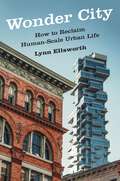
Wonder City: How to Reclaim Human-Scale Urban Life
Par Lynn Ellsworth. 2025
Reimagining our cities for a sustainable and human-centric futureIn her groundbreaking book Wonder City, Lynn Ellsworth delves deep into the…
heart of modern urban life, casting a critical eye on the transformative changes sweeping through cities like New York. This compelling journey into the world of urban development goes beyond the usual narrative, serving as a passionate call to action that encourages readers to actively participate in shaping the future of their cities.Ellsworth expertly navigates through complex themes such as affordable housing, urban planning, historic preservation, and architecture. With a focus on major cities undergoing significant transformations, Wonder City offers an insightful examination of the challenges and opportunities that define contemporary urban life. At the core of this engaging narrative is a striking critique of the real estate industry’s influence over urban landscapes. Ellsworth reveals how historic and culturally rich urban settings are increasingly being overshadowed by the rise of impersonal glass towers, a trend she argues is driven by the industry’s grip on politicians and technocrats. This analysis is both eye-opening and unsettling, shedding light on the forces reshaping our urban environments.Wonder City is more than a critique, however. Ellsworth provides a pragmatic blueprint for revitalizing urban spaces. She champions the need for affordable housing, sustainable urban planning, and architecture that respects and enhances the human experience. Her arguments challenge the prevailing economic theories behind housing supply and question the architectural ideologies that often justify the demolition of historic urban assets.This book is an essential read for urban planners, policymakers, and anyone interested in the future of urban living. Ellsworth’s clear, accessible insights into complex issues make Wonder City a vital contribution to the discourse on urban development, appealing to a broad audience that cares about the dynamics and future of city life.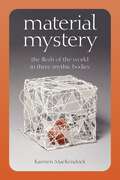
Material Mystery: The Flesh of the World in Three Mythic Bodies
Par Karmen MacKendrick. 2021
Material Mystery considers three apparently anthropocentric myths that are central to Abrahamic religions—those of the primal human, the incarnated and…
possibly divine redeemer, and the resurrected body. At first glance, these stories reinforce a human-centered theology and point to a very anthropomorphic God. Taking them seriously seems to ignore the material turn in the humanities entirely, with the same sort of willful ignorance that some of our politicians show in declaring that their myths count as facts, or that the point of the rest of the world is to further human consumption. But it is possible, Karmen MacKendrick shows, to read these figures through a particular tradition that emerges from the Hebrew Bible, the tradition of Wisdom as a creative force. Wisdom texts are common across the ancient Near East. As the idea of creative Wisdom develops from antiquity into the middle ages, it gathers philosophical influences from a range of philosophical traditions. This exuberantly promiscuous impurity—intellectual, artistic, and theological—generates new interpretive possibilities. In these interpretations, each human-like figure opens up onto the world''s matter, as an interdependent part of it, and matter is thoroughly mixed with divinity. Such mythic readings complement our factual, scientific understanding of the material world, to engage wider kinds of knowing and affective attention—particularly Wisdom''s combination of care and delight.What does it mean to live with life-threatening illness? How does one respond to loss? Freud’s Jaw and Other Lost…
Objects attempts to answer these questions and, as such, illuminates the vulnerabilities of the human body and how human beings suffer harm. In particular, it examines how cancer disrupts feelings of bodily integrity and agency. Employing psychoanalytic theory and literary analysis, Lana Lin tracks three exemplary figures, psychoanalyst Sigmund Freud, poet Audre Lorde, and literary and queer theorist Eve Kosofsky Sedgwick. Freud’s sixteen-year ordeal with a prosthetic jaw, the result of oral cancer, demonstrates the powers and failures of prosthetic objects in warding off physical and psychic fragmentation. Lorde’s life writing reveals how losing a breast to cancer is experienced as yet another attack directed toward her racially and sexually vilified body. Sedgwick’s memoir and breast cancer advice column negotiate her morbidity by disseminating a public discourse of love and pedagogy. Lin concludes with an analysis of reparative efforts at the rival Freud Museums in London and Vienna. The disassembled Freudian archive, like the subjectivities-in-dissolution upon which the book focuses, shows how the labor of integration is tethered to persistent discontinuities.Freud’s Jaw asks what are the psychic effects of surviving in proximity to one’s mortality, and it suggests that violences stemming from social, cultural, and biological environments condition the burden of such injury. Drawing on psychoanalyst Melanie Klein’s concept of “reparation,” wherein constructive forces are harnessed to repair damage to internal psychic objects, Lin proposes that the prospect of imminent destruction paradoxically incites creativity. The afflicted are obliged to devise means to reinstate, at least temporarily, their destabilized physical and psychic unity through creative, reparative projects of love and writing.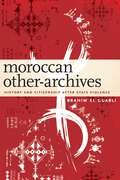
Moroccan Other-Archives: History and Citizenship after State Violence
Par Brahim El Guabli. 2023
Winner, 2024 L. Carl Brown AIMS Book Prize in North African StudiesHonorable Mention, 2024 MELA Book AwardsFinalist, 2024 ASA Best…
Book PrizeMoroccan Other-Archives investigates how histories of exclusion and silencing are written and rewritten in a postcolonial context that lacks organized and accessible archives. The book draws on cultural production concerning the “years of lead”—a period of authoritarianism and political violence between Morocco’s independence in 1956 and the death of King Hassan II in 1999—to examine the transformative roles memory and trauma play in reconstructing stories of three historically marginalized groups in Moroccan history: Berbers/Imazighen, Jews, and political prisoners.The book shows how Moroccan cultural production has become an other-archive: a set of textual, sonic, embodied, and visual sites that recover real or reimagined voices of these formerly suppressed and silenced constituencies of Moroccan society. Combining theoretical discussions with close reading of literary works, the book reenvisions both archives and the nation in postcolonial Morocco. By producing other-archives, Moroccan cultural creators transform the losses state violence inflicted on society during the years of lead into a source of civic engagement and historiographical agency, enabling the writing of histories about those Moroccans who have been excluded from official documentation and state-sanctioned histories.The book is multilingual and interdisciplinary, examining primary sources in Amazigh/Berber, Arabic, Darija, and French, and drawing on memory studies, literary theory, archival studies, anthropology, and historiography. In addition to showing how other-archives are created and operate, El Guabli elaborates how language, gender, class, race, and geographical distribution are co-constitutive of a historical and archival unsilencing that is foundational to citizenship in Morocco today.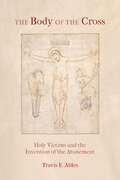
The Body of the Cross: Holy Victims and the Invention of the Atonement
Par Travis E. Ables. 2022
The Body of the Cross is a study of holy victims in Western Christian history and how the uses of…
their bodies in Christian thought led to the idea of the cross as a substitutionary sacrifice. Since its first centuries, Christianity has traded on the suffering of victims—martyrs, mystics, and heretics—as substitutes for the Christian social body. These victims secured holiness, either by their own sacred power or by their reprobation and rejection. Just as their bodies were mediated in eucharistic, social, and Christological ways, so too did the flesh of Jesus Christ become one of those holy substitutes. But it was only late in Western history that he took on the function of the exemplary victim.In tracing the story of this embodied development, The Body of the Cross gives special attention to popular spirituality, religious dissent, and the writing of women throughout Christian history. It examines the symbol of the cross as it functions in key moments throughout this history, including the parting of the ways of Judaism and Christianity, the gnostic debates, martyr traditions, and medieval affective devotion and heresy. Finally, in a Reformation era haunted by divine wrath, these themes concentrated in the unique concept that Jesus Christ died on the cross to absorb divine punishment for sin: a holy body and a rejected body in one.